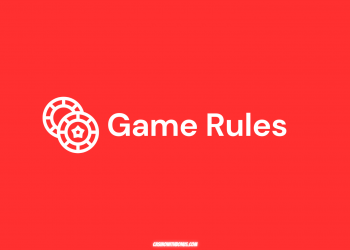- Objective: becoming the first to move all of the checker pieces to the other side of the board while bearing them off.
- Number of players: 2
- Materials: backgammon board, cups, checkers, dice
- Type of game: strategy board game
- Audience: ages 6 – adults
Contents
Contents
For the ones who are interested in the games of backgammon, it’s worth noting that there must be a decent backgammon set. It comes inclusive of the board. There are large and often raised lines in it. In case your opponent or you is fit, then you will be placing the counter.
It involves two players usually, and the object of the game is to move all the checkers around the board, everything in the clockwise direction. Ultimately it works for beating all the checkers from the board, and the first player will be getting the ability to remove all the checkers.
Backgammon:Setup
Backgammon rules state that in the game, there is the involvement of the 24 checkers on the board that is referred to as point. The checkers are always color-coded. There are 15 that will be available in 1 color and yet another 15 that is another color.
Every player will be setting the board according to the diagram that shows the positioning. The two pieces will be going on the 24th point, and 5 will be on the 13th point. Then there will be three on the 8th point, and 5 will be on the 6th point.
In this way, the game will start, and the players will have to always keep on finding the way to move all their pieces to the home board and successfully just keep away all the pieces from the board. The strong strategy is always trying to hit as many opponents as possible, which is referred to as blot.
Backgammon: How to Play?
For playing backgammon games, one has to consider certain strategies. The object of the game is that you will always have to move the checkers around the backgammon board. Regardless of the kind of variation you’re playing, this rule will be constant, and eventually, you will have to just complete the board, which is called bearing off.
Once the player completes the bearing of all the checkers available there, the player becomes the winner of the game. So let’s move on with the steps.
Backgammon: The Steps
Step 1: Rolling the Dice
The players can take turns rolling the dice beginning with player 1 rolling two of the dice with the dice cup. Then the number is facing up on the dice roll, indicating how many points are there for the checker to be moved. Every dice and the corresponding move are separate, and the two face-up numbers should not be added together.
If you decide who will be rolling first, then it’s worth noting that every player should roll one dice, and whoever gets the higher number will be going first.
Step 2: Rolling Doubles
Rolling doubles in the backgammon games mean that the players have already rolled the dice, and both having the same number face up. Whenever this happens, the player will get to move the role on the dice four separate times. For example, if you consider taking the pair of two, then you will have to move any four checkers forward direction two points each.
Step 3: Follow Directions for Moving Checkers
The checkers will always be advancing around the board in one direction for every player, and it may happen so that you are not moving the checkers backward at any time.
Step 4: Moving to the Open Points
Checkers may only be moving to the open points. The point is the one that is referred to as open, and it meets one of the following criteria:
• No checkers on it
• The rolling player’s checkers on it
• Just one of the opponent’s checkers on it.
Always note that whenever you’re combining the dice to move a single checker, the checker may not temporarily stop on a closed point.
Step 5: Blot and hit
The bolt is the point that will be having only one checker on it. On the other hand, it is a reference to the point where the player moves the checker onto the blot with the opponent’s checker on it. Whenever the situation comes in the opponent’s checker finding removal from the point, then the rule is to keep it on the bar the opponents.
The first move and the turn must be to move to the checker back into the place starting in the opponent’s home board. This can only occur whenever the player rolls the number equal to the open point in the opponent’s home board.
Step 6: Protection of the checkers
Starting the checker over the beginning of the board turns out to be undesirable in this game, and so players should always try protecting the checkers as much as possible. And they can do so by leaving the few blots open.
Also, make sure about considering every point that you are having the checkers. See to that it has at least two checkers, so they can not get hit.
Step 7
Blocking since the player can only go on with moving the checkers on the open point, you can start controlling the opponent’s ability to move the checkers into the home board or removing the hit checker of the bar. You can do that by blocking points.
Backgammon: Step 8: Bearing off to win
Once the player completes moving all the checkers into the home board, then they can consider moving them off the board, and this moment is referred to as the bearing of the board. Forgoing with the bearing-off chances of the checkers, you should always consider rolling the number of points the checkers are sitting on or higher.
Highlight on the Winning Strategy
The player that successfully removes all the checkers from the home board is the one who will be winning the game. In case you’re able to move around 15 checkers off the board before the opponent, then you are the one that will be winning the game.
In case you can bear all the 15 before, then the opponent has the chance for bearing off any of theirs, and the opponent still has got the chance on the home board. Then the winning will be considered in the form of worth three points in the games of backgammon.
What’s the Highlight of the Doubling Cube?
These days most of the backgammon sets are coming with the doubling cube. This is the cube that finds use in the competitions and is not an essential component of the game. However, it always works for the addition of an element of excitement.
Cube finds a use for doubling the stakes of the game, and the marking is with the numbers 2, 4, 8, 16, 32, and 64. If you have already decided to play with the doubling cube, you will have to just consider starting with the game at any point.
In the case at the same point in game 1 of the opponents feel that they have the advantage of win, they can consider pulling out the doubling cube and doubling the point of the game. The opposing player can just go ahead with others accepting the challenge by picking up the cube and placing it on the side of the board, or they can also take the alternative that is conceding the game and considering losing one point instead of two.
At times, the tide turns in favorites raising the stakes just from two points to four. The opponent can accept they will be giving up the two points as opposed to one whenever it comes to conceding.






